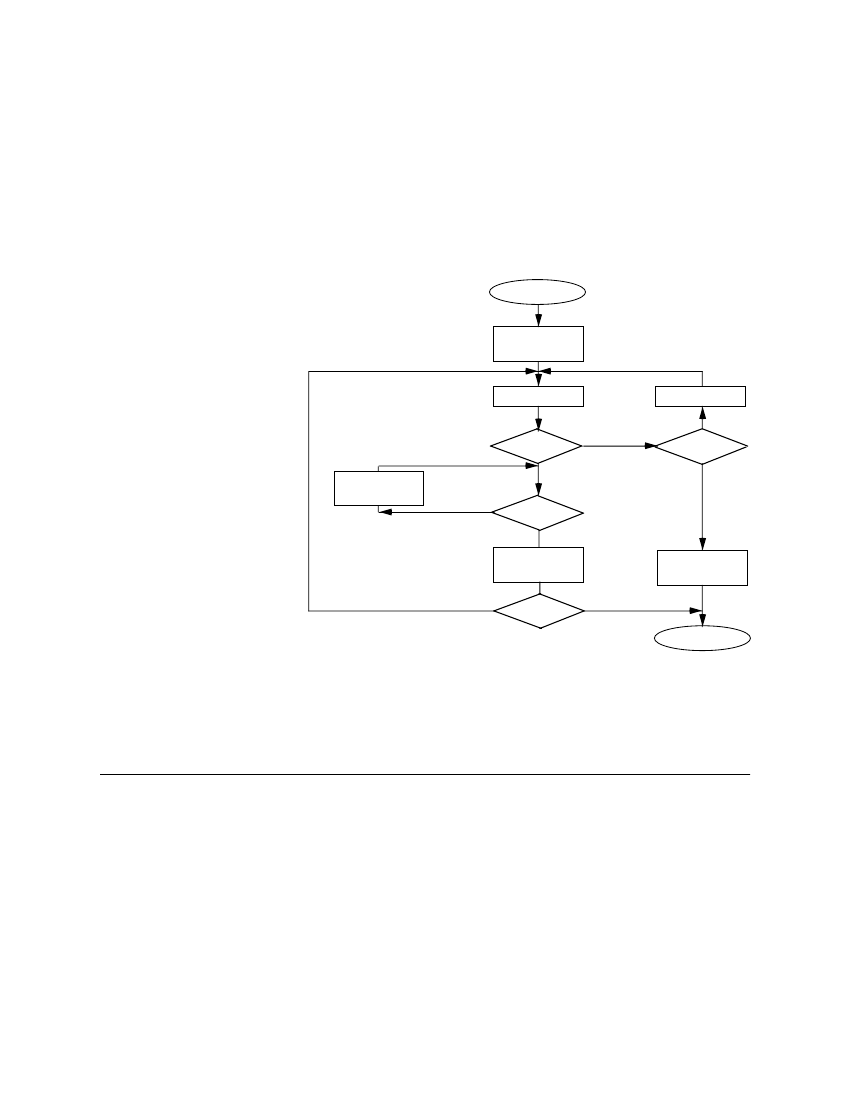
TIFF 6.0 Specification
Final—June 3, 1992
ing the number of zero coefficients until a non-zero AC coefficient is encountered.
If the count of consecutive zero coefficients exceeds 15, then a ZRL code is coded
and the zero run-length count is reset. When a non-zero AC coefficient is found,
the number of significant bits in the non-zero coefficient, SSSS, is combined with
the zero run-length that precedes the coefficient, NNNN, to form an index into the
two-dimensional VLC table. The selected VLC is then coded. The VLC is fol-
lowed by a VLI that represents the value of the AC coefficient. This process is
repeated until the end of the block is reached. If the last AC coefficient is zero,
then an End of Block (EOB) VLC is encoded.
Start
K=0
R=0
K= K+1
R= R+1
N
Coef(K) = 0?
N
Code (ZRL)
R = R - 16
Y
R > 15 ?
N
Code R,Coef (K)
R=0
N
Y
K = 63 ?
Y
Code (EOB)
K = 63 ?
Y
Done
Figure 5. Encoding Procedure for AC Coefs
JPEG Lossless Processes
The JPEG lossless coding processes utilize a spatial-prediction algorithm based
upon a two-dimensional Differential Pulse Code Modulation (DPCM) technique.
They are compatible with a wider range of input pixel precision than the DCT-
based algorithms (2 to 16 bits per component). Although the primary motivation
for specifying a spatial algorithm is to provide a method for lossless compression,
JPEG allows for quantization of the input data, resulting in lossy compression and
higher compression rates.
Although JPEG provides for use of either the Huffman or Arithmetic entropy-
coding models by the processes for lossless coding, only the Huffman coding
model is supported by this version of TIFF. The following is a brief overview of
the lossless process with Huffman coding.
100